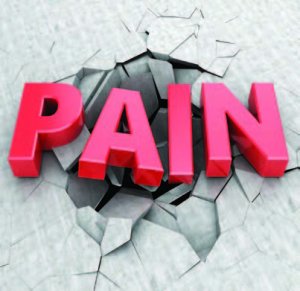by Specialdocs Consultants, LLC | Nov 20, 2017 | Medications, Patient News

Nothing erodes the quality of life faster than pain and unfortunately more than half of American adults report they live with it on a chronic, recurring basis. That makes it easy to understand why, when seemingly safe, effective opioid drugs became widely available in the 1990s, they were quickly embraced by physicians and patients. Considered one of the most promising developments in pain management in decades, opioids such as oxycodone (OxyContin, for example), hydrocodone (Vicodin) or meperidine (Demerol) had already proved highly effective on a short-term basis to treat acute pain. The mechanisms were clear: opioid molecules travel through the bloodstream into the brain, attach to receptors on the surface of certain brain cells and trigger the release of dopamine in the brain’s reward and pleasure center.
However, what was not known was how patients reacted to these medications when taken daily for weeks, months and years to treat chronic conditions ranging from headaches and stubborn lower back pain to neuropathy, fibromyalgia and severe degenerative joint disease. As use of opioids for chronic pain (defined as lasting longer than three months) became widespread, reports of unwanted side effects emerged, along with doubts about long-term efficacy and optimal outcomes. Most alarmingly, the potential for abuse and addiction materialized into a full-blown crisis, evidenced by stark statistics like these:
- Opioid prescriptions increased 7.3% from 2007-2012; by 2013, 1.9 million people were reported to be abusing or dependent on opioids. As many as 25% of people prescribed opioids on a long-term basis struggle with addiction.
- 165,000 Americans died from overdosing on prescription opioids from 1999-2014, climbing from 3 deaths per 100,000 people to 9; the highest rates were seen among 25 to 54-year-old white Americans.
Clearly, sweeping changes were needed, and in response, new recommended guidelines for safer pain management were issued by the Centers for Disease Control (CDC) last spring, and received
strong endorsement from well-respected organizations including the American Academy of Pain Medicine and the American College of Physicians (ACP). According to ACP, the recommendations are “reasonable, based on the best available evidence, and find the right balance between educating about the hazards of opioids while recognizing special circumstances where such medications may be an important part of a treatment plan.” The recommendations specify best practices for dosage levels and usage, and raise awareness of the risks posed to all patients by the drugs. Please note that these are recommendations only and may be altered at the discretion of the physician treating you to fit your unique needs. These include:
- Non-pharmacologic and non-opioid therapy are preferred for chronic pain. Opioid therapy should be used only if expected benefits for both pain and function are anticipated to outweigh risks.
- If opioids are used, they should be combined with non-pharmacologic and non-opioid pharmacologic therapy, as appropriate.
- Physicians should establish treatment goals with their patients before starting opioid therapy, including realistic and clinically meaningful goals for pain and function, and an ‘exit strategy’
should the therapy need to be discontinued.
- Use immediate-release opioids instead of extended-release/long-acting opioids.
- Use the lowest effective dosage, and carefully reassess individual risks and benefits when increasing dosage to ≥50 morphine milligram equivalents per day.
- Prescribe immediate-release opioids for acute pain in no greater quantity than needed for the expected duration of pain – three days or less will often be sufficient, more than seven days will
rarely be needed.
- A frank physician-patient discussion regarding the risks and benefits of opioids should take place before starting therapy. An evaluation of benefits and harms should be scheduled within one to four weeks of starting opioid therapy, and repeated at least every three months. If benefits do not outweigh harms of continued therapy, physicians should explore alternatives (see sidebar) with patients and work with them to gradually taper off to lower doses and ultimately discontinue use.
The post The Painful New Reality of Opioid Prescriptions appeared first on Specialdocs Consultants.
by Specialdocs Consultants, LLC | Nov 20, 2017 | Nutrition, Patient News

While the evidence is not yet in on the enhanced nutritional value of organic or natural foods, consumers appear to have made their own decision. The latest research shows more than 62 percent of Americans now regularly shop for these types of products and pay premium prices for ‘farm to table’ dishes when dining out. Many questions remain, however, chief among them: what exactly is promised by these terms…and do they deliver?
The lack of official guidelines can make it difficult to identify the difference between ‘organic’ and ‘natural’ or ‘cage-free’ versus ‘free-range.’ The Food and Drug Administration (FDA) does not formally define ‘natural,’ but refers to a longstanding policy that interprets it to mean nothing artificial or synthetic has been added to a food that wouldn’t normally be expected, without addressing production, processing or manufacturing methods. Realizing the term is vague, even misleading, the FDA is solicitingpublic input until May and plans to issue more meaningful standards later this year.
For now, “’all-natural’ is more of a marketing ploy,” according to Mick Bessire, agricultural educator at Cornell Cooperative Extension. “Antibiotics can be used in production, or chickens can be raised in battery cages and have their beaks trimmed and still be called natural.”
Other frequently used terms:
Organic: A USDA Organic seal signifies that the product is made without synthetic fertilizers, irradiation, and has not been genetically modified in any way; no antibiotics or growth hormones are used in meats; 100 percent organic feed is used for livestock. The use of food additives and fortifying agents such as preservatives, artificial sweeteners and colors is severely restricted. Usually pesticide-free, too.
Hormone-Free: The best choice for hormone-free meat is products with the USDA Organic label. Hormones are already banned in egg-laying hens.
Grass-Fed: Look for an American Grass-fed Association or Animal Welfare Approved stamp, which guarantee the animal was raised on a family-owned pasture or range. Beyond the humane
benefits, some studies have found that grass-fed beef contains higher levels of healthy fatty acids and antioxidants.
Cage-Free: A voluntary label recognized by the USDA’s Agricultural Marketing Service (AMS) as birds permitted to roam, but generally without access to the outdoors.
Free-Range or Free-Roaming: Another voluntary label that indicates animals have access to the outdoors but type and duration is undefined.
Pasture-raised: Means animals roam freely and eat vegetation in their natural environment.
Certified Humane: Offers more specific guidelines for cage-free, free-range and pasture-raised labels.
White/brown eggs: Does not indicate quality or nutrition levels, but is based on the breed of the egg-laying hen.
Farm-raised fish: Frequently bred to be heavier, grow faster and can contain chemicals versus wild-caught fish. Diner beware though: according to advocacy organization Oceana’s recent study, restaurant customers were misled about salmon 43 percent of the time – ordering sustainable wild salmon as labeled on the menu, but receiving farmed salmon on their plates.
Is it worth the effort? Probably. For example, wild salmon contains far more healthy omega 3 fatty acids than farm-raised salmon. While a recent study from Mayo Clinic showed that many organically and conventionally produced foodstuffs were similar nutritionally, organic foods are inarguably less processed and more sustainable choices – good for our bodies and the environment.
The post Is What You’re Reading What You’re Eating? appeared first on Specialdocs Consultants.
by Specialdocs Consultants, LLC | Nov 20, 2017 | Medical Conditions, Patient News

The aching, swollen, stiff joints associated with osteoarthritis (OA) have long been considered an inexorable result of aging. According to conventional wisdom, cartilage, the smooth connective tissue on the end of bones that cushion the joints, simply breaks down over a lifetime of walking, exercising and moving, allowing the bones to rub together. When medications and physical therapy no longer provide relief, a costly and time-intensive mechanical joint replacement may be the only solution. However, advances in research and a focus on prevention are providing
a new outlook on an ageold problem…we bring you the latest insights, below.
Prevention
The connection between overweight and OA is even stronger than previously thought. Recent studies show that up to 65 percent of cases of OA of the knee could be avoided if weight was reduced. Consider that your knees bear a force equivalent to three to six times your body weight with each step, so a lighter weight relieves the burden considerably. For women, extra weight is even more of a risk factor than men. In addition, fat tissue produces proteins called cytokines that cause inflammation, and in the joints, this can alter the function of cartilage cells. Gaining weight results in your body releasing more of these harmful proteins. However, losing even a few pounds can reduce joint stress and inflammation and decrease by half the risk of OA.
Avoid practicing a sport in an intensive and prolonged way. An injured joint is nearly seven times more likely to develop arthritis than one that was never injured. The condition is now seen more frequently among 30 to 50-year-olds than previously because young athletes or middle-aged ‘weekend warriors’ who tear their anterior cruciate ligament (ACL) or menisci of the knee have a much higher risk of osteoarthritis 10 to 20 years after their injury. Take steps to manage or prevent diabetes, which may be a significant risk factor for OA. Some studies suggest high glucose levels trigger the formation of molecules that make cartilage stiffer and less resistant to stress, and cause inflammation that leads to cartilage loss.
Management
Low impact exercise is key to living well with osteoarthritis. While resting aching joints can bring temporary relief, lack of movement will ultimately lead to more discomfort.
Exercise strengthens the muscles around the joint, acting like a shock absorber, helping to reduce pain. In addition, exercise helps with weight control and is a natural mood elevator. Experts recommend low-impact activities like swimming, walking, biking, and moderate weight lifting. The Arthritis Foundation developed a form of tai chi specifically for people with arthritis,
featuring agile steps and a high stance, that helps increase flexibility and improve muscle strength inthe lower body.
Some new approaches to pain management show promise, but beware of unsubstantiated claims. Platelet-rich plasma (PRP) injections, which involve withdrawing blood, spinning
it to separate the platelets and then injecting the concentrated platelets into a joint, are being studied for long-term effectiveness. Experts advise against costly supplements such as glucosamine, chondroitin and shark cartilage, all of which have proven of little benefit for people with OA. Some elements of Chinese medicine, including herbs and acupuncture, may help control OA symptoms in some people, but these therapies have not yet been confirmed in large, well-designed clinical studies. Also unproven are low-power laser light, copper bracelets or magnets, chiropractic manipulation and acupressure. The most effective over the counter medication are NSAIDs (non-steroidal anti-inflammatory drugs such as Advil). While Tylenol helps reduce pain and is the safest medicine for older people or those with kidney disease, it does not lower inflammation.
Finally, if you do need an orthopedic implant in the future, take comfort in the fact that development of the next generation of devices is well underway. They will likely be biologic, composed of protein and cells instead of metal and plastic,…functioning as well as a normal joint and created to last a lifetime.
The post Joint Assets appeared first on Specialdocs Consultants.
by Specialdocs Consultants, LLC | Nov 20, 2017 | Healthy Aging, Patient News, Wellness

HealthWise presents an ongoing look at research that provides valuable insights to help today’s seniors – and the generations set to follow – create a vibrant next chapter. We have looked at strategies to keep the aging brain healthy and to protect the aging senses. In this issue, we get under your skin to learn how to keep it supple and resilient over the years. Wrinkles. Dry skin. Crow’s feet. Undereye circles. Sagging. Is there a way to stave off these very natural signs of aging? The answer is yes…and no. The thickening of the stratum corneum (the outer layer of the epidermis) which causes drier and flakier skin, is inevitable, as is the thinning of the dermis (underneath the epidermis), resulting in loss of elasticity. Genetics plays a pivotal role in determining when this starts to occur. However, there are a number of preventive steps you can take – some well-known and a few unexpected – which may help mature skin keep its youthful glow at 50, 60 and beyond.
Experts advise:
- Cut your sun exposure in half, at a minimum. UV exposure damages elastin and causes a loss of collagen, which results in sagging, fine lines and wrinkles. Think of sunscreen as the only truly magic elixir to improve skin appearance and health, and most importantly, prevent skin cancer…and choose one with SPF 30 or above and broad-spectrum UVA/UVB protection and use daily. In addition, wear a hat and UV-protective clothing outside, and try and avoid being in the sun when UV rays are strongest, between 11 am and 1 pm.
- Exercise. Another benefit to engaging in at least three hours of physical activity weekly is the positive impact on keeping skin younger, with the potential to reverse skin aging even for those
who start exercising late in life. New research showed that men and women over age 65 who exercised frequently had skin composition similar to 20 to 40-year-olds, with markedly thinner,
healthier stratum corneums and thicker dermis layers. Participants’ skin “looked like that of a much younger person, and all they had done differently was exercise.” Researchers surmised
that myokines, substances created by working muscles, may be responsible for the results, jump starting changes in cells far from the muscles themselves. They also noted that it was
unlikely that any pill or salve would replicate the skin benefits of a workout.
- Take short, lukewarm showers. Long, hot showers strip your skin of its natural oils.
- Protect in winter with a humidifier to add moisture to the home, and gloves to protect your hands from drying out.
- Focus on the right foods and beverages. Include omega-3 and omega-6 fatty acids in your diet, preferably from natural sources such as olive oil and fish, to help protect your skin’s
moisture barrier. Cut back on sugars which promote inflammation and can potentially damage normal production of dermal cells. Avoid high glycemic foods such as white bread and pretzels, which may also be responsible for prematurely aging skin. Drink plenty of water, but moderate alcohol intake – red wine can dilate blood vessels and contribute to rosacea, a skin irritation.
- Establish a smart night routine. Remove all makeup and wash your face before bed to eliminate the pollutants that break down your skin’s collagen all day. Then apply a retinoid followed
by a moisturizer.
- Get a good night’s sleep. During the deepest stage of sleep, your body releases growth hormones for cell repair, helping your skin rejuvenate on a daily basis.
- Minimize dark undereye circles with an extra nighttime pillow. As the delicate skin and muscle around the eyes weaken with time, the fat under the lower-lid skin can pool beneath your eye. Sleeping on two pillows can help prevent fluid accumulation.
If you want to explore other remedies, consider peels that exfoliate, and fractional resurfacing, a laser process that increases collagen production.
The post Aging Well, Aging Healthy…a continuing series appeared first on Specialdocs Consultants.
by Specialdocs Consultants, LLC | Nov 20, 2017 | Nutrition, Patient News

While they may not have the crisp appeal of sugar snap peas or the sleek appearance of a summer tomato, winter’s bounty of root vegetables and greens brings some of the year’s most nutrient-rich dishes to the table. Serve up as chips or gratins, roasted or braised, mashed or raw, in soups or salads…see our recommendations for a taste of the season below.
If you like kale, try collard greens, a super-green that can be thinly sliced and used in salads, or braised with mushrooms for satisfying flavor without meat. Anti-inflammatory, antioxidant (cancer preventive) and cholesterol-lowing nutrients are on the long list of benefits.
Looking for low-carb substitutes for mashed or fried potatoes? Pureed cauliflower makes a delightful stand-in for mashed potatoes, especially when blended with Greek yogurt. Less common are Romanesco, an excellent source of vitamins C and K, fiber and carotenoids; Kohlrabi, with edible roots, leaves and stems packed with potassium and Vitamin C; and Celeriac, also known as root-celery, containing antioxidants, Vitamin K and phosphorus. For a healthy alternative to French fries, consider Jerusalem artichokes, or sunchokes, with a mellow taste and flaky texture, and plenty of energy-boosting iron and cholesterol-lowering soluble fiber. Slice matchstick-thin, mix in a sprinkle of vegetable oil, rosemary, cayenne, salt and pepper and bake for 15 minutes. Or enjoy a baked sweet potato, skin and all, for a winter treat that’s high in Vitamin A and fiber, with a minimum of calories.
Beets, high in folic acids, offer crunch, color and taste. Sautee with garlic and some olive oil or use in soups for a nutritional boost.
Change up onions with leeks, which have a milder, sweeter flavor, and compounds such as allicin that fight free radicals in your body and flavonols that may help fight cancer and lower the risk of heart disease.
Carrots are always a sturdy choice, rich in beta carotene, a compound that may reduce heart disease and certain types of cancer (although supplements are not recommended, especially for smokers), and Vitamin A, which bolsters vision and bone growth. Parsnips offer a change of pace, with a sweet flavor, double the fiber of carrots, potassium and folate for cardiovascular benefits, and almost 40 percent of the daily requirement of Vitamin K, a nutrient associated with bone health.
Winter squash, in a variety of shapes, colors and flavors, are rich in Vitamins C and A, and can be boiled, baked, roasted, simmered, steamed, microwaved or sautéed. For a low-calorie alternative to pasta, try spaghetti squash which yields long yellow strands when cooked. Sweet potato fans will enjoy butternut squash, with a similar sweet nuttiness and an even silkier texture.
Broccoli contains calcium, folate, iron, protein, Vitamins A and C and fiber, and is versatile enough to steam, roast, stir fry, puree for soups or eat raw.
Give winter salads a spin with a bowl of curly endive, radicchio, beets, fennel, kohlrabi and turnip greens. Roast or boil until tender and dress while still warm to allow the flavors to be completely absorbed.
There are many more choices in the produce aisle…go browse your local grocery store and try something new this winter!
The post Find Your Roots with Winter’s Best Veggies appeared first on Specialdocs Consultants.
by Specialdocs Consultants, LLC | Nov 20, 2017 | Healthy Aging, Medical Conditions, Patient News

In the not so distant past, age-related macular degeneration (AMD), characterized by a loss of central vision, was deemed just another unfortunate consequence of growing older. The gradual breakdown of light-sensing retinal tissue that results in a blind spot directly ahead has caused each generation to struggle with driving a car, reading a printed page or recognizing a friend’s face. As the population ages, the sheer number of people affected grows rapidly. Another case of AMD is diagnosed every three minutes in the U.S. More than 2.1 million Americans with advanced AMD now will grow to 3.7 million by the year 2030, according to the National Eye Institute, who warns the condition will soon take on aspects of an epidemic. A surge of clinical trials and investigative research aims to prevent that from happening, with sights set firmly on restorative, curative solutions.
Scientists exploring the possible causes have made much progress isolating a group of genes that increases the likelihood of an individual developing AMD. Other studies point to inflammation as the trigger. The macula needs a constant, rich blood supply to work correctly, and any interference such as narrowing of the blood vessels, fatty plaque deposits, or a shortage of antioxidants, can cause the macula to malfunction and become diseased.
Treatments have likewise advanced. Last fall, a decades-old drug used to treat HIV/AIDS was reported in Science as unexpectedly exhibiting the capability to halt retinal degeneration. Nucleoside reverse transcriptase inhibitors, known as NRTIs, are already FDA-approved and can be rapidly and inexpensively translated into therapies for both dry and wet AMD (see sidebar), say the study’s authors. At the same time, a nanosecond laser treatment was successfully used to reduce drusen (small fatty deposits beneath the retina) and the thickening of Bruch’s membrane, both hallmark features of early AMD. Importantly, the structure of the retina remained intact, suggesting “this treatment has the potential to reduce AMD progression,” according to Medical News Today. Stem cell transplantation shows enormous promise, as reported in Lancet, with sight restored long-term to a group of patients with severe vision loss. Additionally, injectible drugs and pills that target inflammation associated with AMD are in nationwide trials.
Technological innovations to help AMD patients include the 2013 introduction of a miniature telescope implanted behind the iris to magnify images. Google is moving into the space with a patent for a contact lens containing a built-in camera that will enable audible warnings via a remote device, detect and describe faces, and act as a text reader.
Today’s AMD patients have no shortage of low-vison aids to help them adapt and live well. Google is developing a patent for a contact lens containing a built-in camera that will enable audible warnings via a remote device, detect and describe faces, and act as a text reader. Additional solutions range from ‘smart’ thermostats, watches and remote controls to talking devices.
Finally, understanding who is at risk for developing AMD can be key to prevention. These include: white, female, smoker, family member with AMD, high blood pressure, lighter eye color, obesity, and possibly, over-exposure to sunlight. To minimize risk, follow a healthy diet with plenty of leafy green vegetables and fish high in omega-3 fatty acids, exercise to keep weight and blood pressure under control, eliminate tobacco use, and wear sunglasses to protect from UV rays and high-energy visible (HEV) radiation.
When Dry Becomes Wet
Diagnosis of AMD is first confirmed with a visual acuity exam and testing with an Amsler grid. Those with AMD see the grid’s straight lines as wavy or blurred with dark areas at the center. Additional tests help determine the type of AMD — the dry form affects about 85 percent of AMD patients, and in about 10 to 15 percent of cases, progresses to wet. The difference is significant. The wet form usually leads to more serious vision loss, caused by new blood vessels that leak fluid and blood beneath the retina, resulting in permanent damage. While no treatment currently exists for dry AMD, in the last decade, a number of effective therapies have been implemented for wet AMD. These include monthly, intraocular injections (anti-VEGF) to inhibit a protein that stimulates formulation of new blood vessels, photodynamic or ‘cold’ laser treatment, thermal (heat) laser photocoagulation…and on the horizon are topical eyedrops that may someday replace injections. Nutritional supplements containing antioxidant vitamins, lutein and zeaxanthin are also effective in reducing the chances of dry AMD worsening to wet.
The post In Our Sights: Sharper Focus on Macular Degeneration Offers New Hope appeared first on Specialdocs Consultants.







Recent Comments